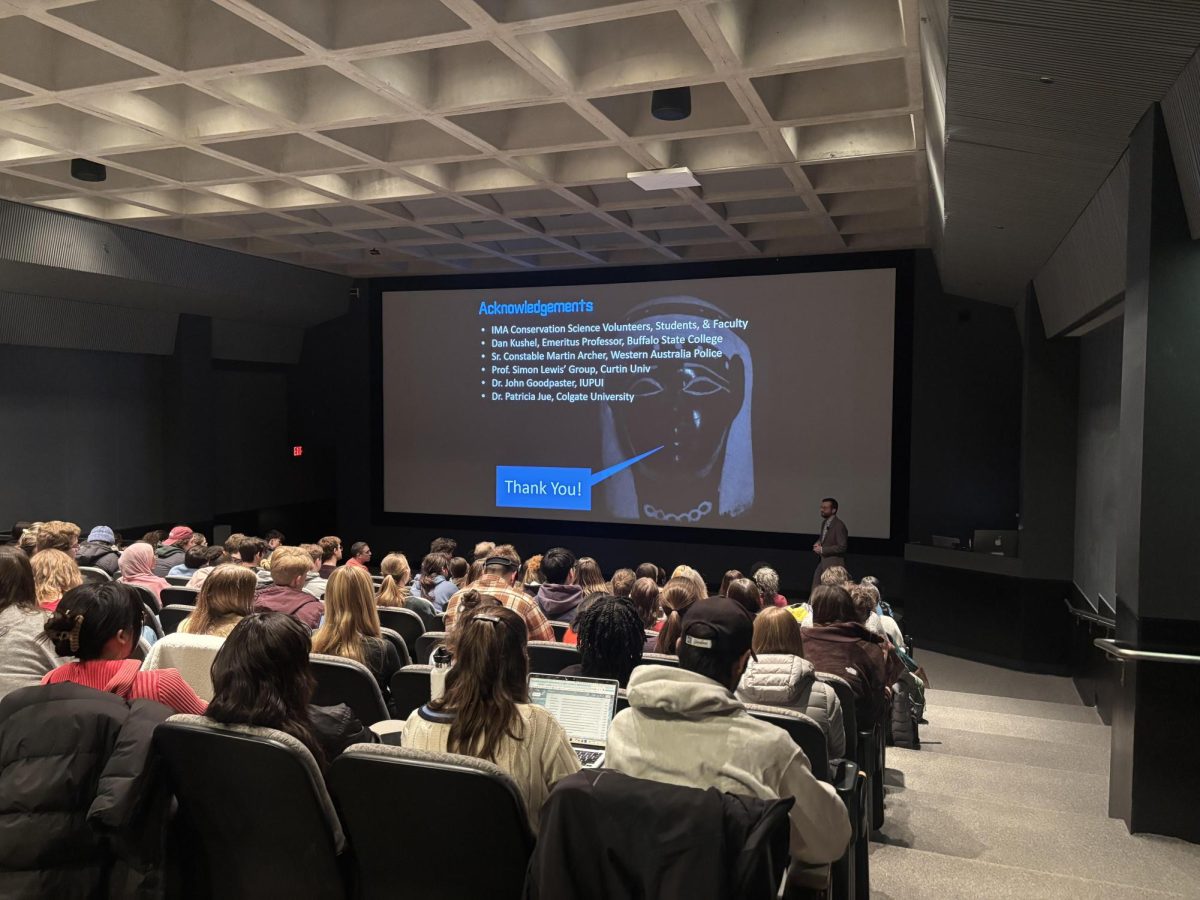In September of 1973, predating the creation of Fleetwood Mac, anchors Stevie Nicks and Lindsey Buckingham released “Buckingham Nicks.” These 10 tracks never received a CD release and aren’t available on streaming platforms. For casual listeners, the album was relegated to relative obscurity, and for more dedicated listeners, the album remained an elusive gem — difficult to find but breathtaking when unearthed. Nearly 50 years later, musical wizard Andrew Bird and rising star Madison Cunningham came together to produce “Cunningham Bird,” a replication of the album that displayed both a reverence for the original artistry and an effort to transform the original tracks into reimagined masterpieces.
Bird and Cunningham maintained the notes and song titles of “Buckingham Nicks,” but fundamentally altered the character. “Buckingham Nicks” is extremely reminiscent of the early ’70s and is very much a work of its time. The vocals are brassy and placed high on the palate, and a twangy guitar is used as the primary instrument on the album. The guitar is layered into multiple strings of melody contributing to a fuller, more upbeat product. “Cunningham Bird” instead utilizes classical string instrumentation — primarily violins, violas and cellos — to create a richer, more nuanced sound quality. The sound is much more subtle and melancholic with isolated strings of melody that create a haunting clarity within the instrumentation. However, the differences in the two tracks exist as an interesting example of how older music is being reinterpreted by a new generation.
“Crying in the Night”
The first track in Cunningham Bird opens with Cunningham’s bare vocals and a staccato string backing. The song progresses into compelling harmonies and impressive vocal slides from Cunningham. Bird supports through vocals, but ultimately displays his signature violin work — replacing “Buckingham Nicks’” guitar tracks. The sound of this track is much more plain, prompting listeners to consider the singularity of the instruments and vocals, and the importance of the changes in rhythm, pitch and dynamics. By doing such, this track comes off as more mature than its early ’70s counterpart.
Music critic Kenneth Womack writes the same for Salon, arguing that the new tracks uplift their previous version.
“While much of the latter album serves as a solid retelling of the original’s songs, tracks like ‘Crying in the Night’ arguably improve on ‘Buckingham Nicks’’ earlier ambitions,” Womack writes. “The song positively soars on the back of Bird’s violin.”
“Stephanie”
This track, in both albums, is instrumental. “Buckingham Nicks” relies on a plucked melody on the guitar whereas “Cunningham Bird” relies on technical violin work — primarily glissandos, or gliding through notes. Additionally, Bird and Cunningham add vocals that contribute to a sound of yearning and vulnerability that isn’t present in “Buckingham Nicks.”
“Without a Leg to Stand On”
The original version of this track is laid back and unequivocally cool. Bird and Cunningham instead sing an intimate and beautiful duet. The strings are sparse, contributing to a sense of fragility. The track loses some of its original brashness but gains more emotional resonance through the delicate vocals and resolutions in vocal tension throughout the track.
Michael Gallucci finds “Without a Leg to Stand On” as just one place where the addition of musical elements add on to the previous version in a review for Ultimate Classic Rock.
“There’s a delicate loveliness to Bird and Cunningham’s tribute lacking on the original LP, even when their reverence for the music often means the connect-the-dots approach doesn’t leave much room for spontaneity or personality,” Gallucci writes. “Some new arrangements, however, glisten with strings and harmonies not found in Buckingham Nicks’ ‘Without a Leg to Stand On,’ ‘Long Distance Winner’ and others.”
“Crystal”
In both versions, this track is somewhat of a ballad. Buckingham sings with conviction that “the water was closing all around, like a glove, like the love that had finally, finally found me.” Nicks joins the vocals halfway and adds to the sum of the sound present. “Cunningham Bird” reimagines “Crystal” in a more delicate light. Cunningham’s vocals are soft, and feel as though they might break. The instrumental backing is quiet and rhythmic — reminiscent of a heartbeat. As the track reaches the end, Bird, on this violin, begins a haunting musical interlude that finally fades into silence, leaving listeners to consider the importance of silence within the song.
Referring to “Crystal,” music writer Desh Kapur emphasizes the duo’s chemistry in a review for All Music Magazine.
“Cunningham’s emotive vocals bring a haunting dimension to the songs, while Bird’s violin and multi-instrumental prowess weave subtle, yet evocative layers,” Kapur writes. “Their interpretation is marked by a balance of respect for the original work’s exuberance and the confidence to add their unique imprint.”
“Long Distance Winner”
For Buckingham and Nicks, this track is the most reminiscent of the Fleetwood Mac sound, specifically “The Chain.” The sharp, twangy guitar coupled with the pacing of the track creates an urgency within. Bird and Cunningham trade the faster pace for a more inquisitive and gentle tone. The strings create a languid rhythm and the vocals are warm and smooth. The difference in tone between these two pieces displays the “Cunningham Bird” version as more mature and clearly evidences the time that has passed between the two releases.
“Don’t Let Me Down Again”
Both versions of this song are upbeat, fast-paced and intense. “Buckingham Nicks” prioritizes the instrumentation whereas “Cunningham Bird” emphasizes the vocals. For “Cunningham Bird” the percussion is more robust and the strings are more gravelly. Another instrumental conclusion leaves listeners to consider the interaction between the melody, rhythm and vocals.
“Django”
Perhaps my favorite track on the “Cunningham Bird” album, Bird and Cunningham depart significantly from the guitar and Spanish-sounding melody of the “Buckingham Nicks” track. Instead, strings, in conjunction with Cunningham’s generational vocals, combine to create an atmospheric, indelible track that is as vocally compelling as it is instrumentally.
“Races are Run”
“Races are run, some people win, some people always have to lose.” As with previous tracks, the “Buckingham Nicks” version is guitar-forward, though slower-paced than previous tracks. It is rhythmic, and Buckingham and Nicks sing as though they have lost. In contrast, Bird and Cunningham sing this track in a much more upbeat manner — as though they were winners. This contrast is interesting because it subtly shifts the cultural perception of this track.
“Frozen Love”
The “Buckingham Nicks” version of this song is also very reminiscent of “The Chain” with punchy percussion and tonality. Bird and Cunningham take this in a different direction and transform it into a more introspective ballad. The strings in this track echo the quiet tension in the vocal track. The delicate nature of the vocals highlights the emotional fragility of this song.
Bird and Cunningham’s reimagining of this album blends contemporary sensibilities with influences of the time. “Cunningham Bird” is an introspective take on the original tracks that seeks to bridge the gap between modern musicality and the sounds of a different generation. By breathing life into an album that was largely lost to time, Bird and Cunningham display their talent as artists, musicians and ultimately, intergenerational mediums.






